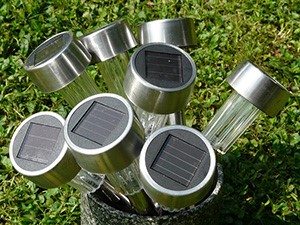We all want to save our planet. However, most homeowners have a misconception that having an eco-friendlly home would require a lot of money, time, and patience. Perhaps this is probably true for huge projects, such as solar panels and temperature-regulating walls, but you also have to consider that there are plenty of ways on how you can actually help your household adapt to more environment-friendly practices and here are some of those.
1. Everything Starts with a Calculator
If you are going to renovate/update your property, look to make them environmentally friendly. Like anything you’ll need to do a cost analysis, this will help you make the nest decisions possible. In order to monitor your monthly energy usage, it is advisable to use an energy calculator. Additionally, most of these show graphs that demonstrate your home's potential after undergoing minor changes to conserve electricity. Thus, you'll have an idea on how to modify your usage.
2. Power Strips Can Do Wonders!
Have you killed the “energy vampires” just yet? For those who are not aware, a lot of appliances consume electricity just because they are plugged in– even if you're not using them or they're turned off. You can easily control your energy usage by simply unplugging these appliances. Likewise, you can also consider plugging the appliances into power strips. As you turn the power strip off, you'll also cut down the flow of electricity from there. For your computer, set it to sleep or hibernate when not in use. By doing so, you'll be able to continue later on without wasting electricity at all.
3. Make a Switch to Compact Fluorescent Light Bulbs
Today, compact fluorescent light bulbs are available to fit all kinds of fixtures, and the best thing about them? Not only do they only consume a quarter of electricity that regular incandescent bulbs use, they also last 10 times longer!
Aside from switching to energy-efficient light bulbs, you should also make it a habit to turn off the lights after using them. If you're living in a household where everyone seems to be so forgetful or negligent, then you should install a movement sensor that only activates the lights when needed. Another way to conserve energy is to install automatic timers for lights in empty rooms.
4. The Heating and Cooling Temperature Are Set Correctly
What's the biggest electrical energy consumer in a household? The refrigerator and freezer! What you can do to lower the electrical consumption of these appliances is to take the necessary steps to ensure that they're not working harder than needed. For example, your fridge should be set at 37F, while your freezer at -3F. This would keep everything nice and frosty, but you'll also be consuming less electricity. Additionally, don't forget to close the freezer and fridge doors after using them. Leaving these doors open is a complete waste of energy.
You should also get an electric thermostat as this would allow you to lower the temperature of your furnace while your family sleeps, and return to a toastier temperature later on. During winter, the thermostat should be set at 68 F during the day, and 55 F at night. In summer, keeping it at 78 F is ideal.
5. The Attics and Basements Should Be Properly Insulated
You are probably not aware of this, but energy could seep out through the basement and attic if they're not properly insulated. Thus, if you really want to reduce your home's energy consumption, while cutting your cooling and heating bills as well, then insulation is the key.
Look for an eco-friendly insulation material, such as cellulose insulation, because they could be inserted into small holes and into the walls. That's why they're also perfect for remodeling.
6. Repurpose Furniture
Instead of buying new furniture every time, it would be best if you visit the thrift shops instead. From here, you can find treasures at an affordable price, while saving the trees and our planet.
7. Utilize Solar-Powered Lights
There are a lot of solar powered light fixtures available in the market. If it gets exceptionally sunny in the area where you live in, then this would really help with your energy consumption. You'll be able to keep the lights on at night, and just recharge them during the day.
Final Words
There are a lot of ways that would allow you to turn your home into something that's environmentally friendly. Although it can feel a little overwhelming at first, know that you can always start small. Baby steps aren't bad, and before you know it, you're already spending less on your energy consumption.
Incoming Queries



